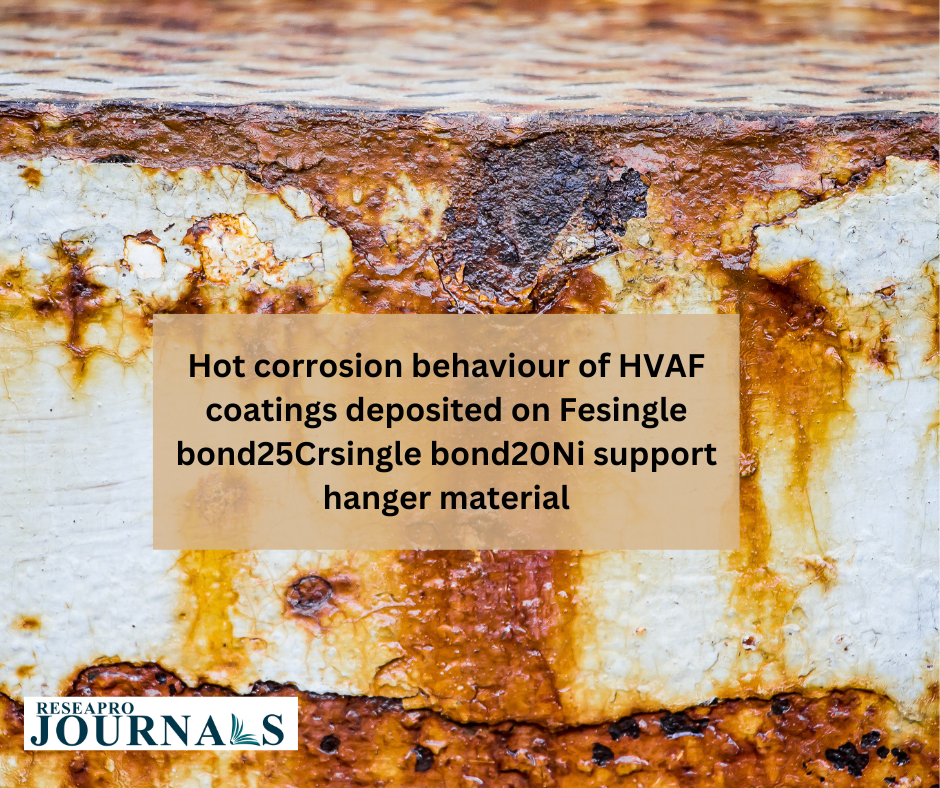|
Getting your Trinity Audio player ready...
|
 hot
hot
Hot corrosion is a serious problem in petrochemical heaters, boilers, and gas turbines where a material with good oxidation resistance can oxidize severely in the presence of salts and oxides. Hot corrosion is a complex process which involves dissolution or weakening of the passive oxide layer responsible for oxidation resistance and promotion of oxidation leading to loss of structural integrity. Rapp et al. and others have carried out fundamental studies on hot corrosion of metals and alloys. Hot corrosion is usually classified into Type-I corrosion and Type-II corrosion based on the temperature prevalent during the hot corrosion relative to the melting point of the salt mixture. In Type-I corrosion, the temperature of hot corrosion is well above the melting point of the salt, while in Type-II the temperature is very close to the melting point of salt. Studies have been carried out on adding MgO, Y2O3 to fuel and this has proven effective in increasing the melting point of the ash and hence reducing the corrosion due to molten ash. However, this method is not practical especially when refineries need to process multiple crudes containing varying fractions of metals and Sulphur.
American Petroleum Institute (API) – 560 Fired Heaters for General Refinery Service is the standard for designing heaters for oil refineries. The metallurgy of support hangers is based on S, Na, and V contents in the fuel and the operating temperature. API recommends the material of construction (MOC) for the support hangers to be Fe 25Cr
25Cr 12Ni (ASTM A447 Type II) or Fe
12Ni (ASTM A447 Type II) or Fe 25Cr
25Cr 20Ni (ASTM A351 Gr HK40) for continuous operation in the temperature range, 600 °C – 950 °C, if the fuel contains less than 100 mg/kg of total vanadium and sodium. For above 100 mg/kg, for resisting hot corrosion, API recommends Nb-stabilized 50Cr
20Ni (ASTM A351 Gr HK40) for continuous operation in the temperature range, 600 °C – 950 °C, if the fuel contains less than 100 mg/kg of total vanadium and sodium. For above 100 mg/kg, for resisting hot corrosion, API recommends Nb-stabilized 50Cr 50Ni grade (ASTM A560 Gr 50Cr-50Ni-Nb). Older refineries that were originally designed for processing crude oil with low ash content traditionally used cast Fe
50Ni grade (ASTM A560 Gr 50Cr-50Ni-Nb). Older refineries that were originally designed for processing crude oil with low ash content traditionally used cast Fe 25Cr
25Cr 20Ni material for supporting heater tubes. However, Vanadium content in the crude as well as IFOs has been increasing gradually and is expected to increase further in the future. Currently, the global average Vanadium content in the IFO is about 210 mg/kg. Thus, the Fe
20Ni material for supporting heater tubes. However, Vanadium content in the crude as well as IFOs has been increasing gradually and is expected to increase further in the future. Currently, the global average Vanadium content in the IFO is about 210 mg/kg. Thus, the Fe 25Cr
25Cr 20Ni cannot withstand the hot corrosion and needs replacement. Therefore, older refineries are turning towards replacing the traditional support-hanger material with more expensive 50Cr
20Ni cannot withstand the hot corrosion and needs replacement. Therefore, older refineries are turning towards replacing the traditional support-hanger material with more expensive 50Cr 50Ni cast material due to its resistance to hot corrosion.
50Ni cast material due to its resistance to hot corrosion.



